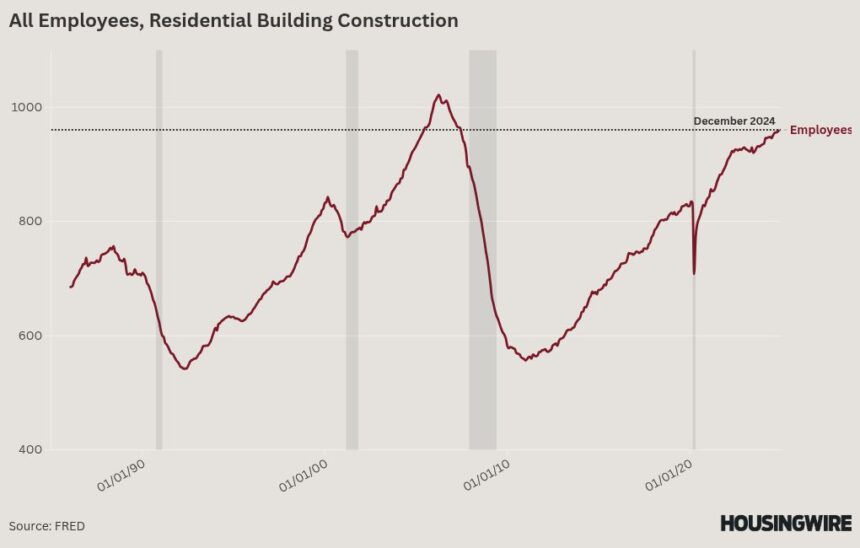Today’s jobs report beat expectations, and in fact, the labor data was solid for jobs week, which means mortgage rates will stay elevated because it’s always about labor over inflation when talking about rates.
Now, the labor market is getting softer from its torrid pace of job creation and wage growth from 2021 to the end of 2023, but the labor market’s softening is right in line with my 2024 forecast for jobs. I’ll show you why I believe the labor market is getting softer, but not breaking, which is what is needed to get mortgage rates lower and keep them there for longer.
From BLS: Total nonfarm payroll employment increased by 256,000 in December, and the unemployment rate changed little at 4.1 percent, the U.S. Bureau of Labor Statistics reported today. Employment trended up in health care, government, and social assistance. Retail trade added jobs in December, following a job loss in November.
First, let me briefly explain my model and how I viewed the labor data going into 2024.
In December 2023, the labor market reached a milestone, with non-farm payroll employment exceeding 157 million people employed. Given this momentum, I expected the monthly job creation figures to fall within my range of 140,000 to 165,000 jobs in 2024. It seemed reasonable to anticipate a slowdown as we approached the 159 million employment level. However, this adjustment only occurred after some negative revisions to the data.
Let’s look at the latest data, taking a 3 to 6-month average of job creation to smooth things out.
- 3-month average: 170,000
- 6-month average: 165,000
So, 2024 ended more in line with my upper forecast using the average over the last six months. We see weakness in manufacturing labor as it gets impacted by higher rates and the cost of capital. Manufacturing jobs were down in 2024 by 87,000. We see job growth in employment in the traditional sectors such as health care and government.
The key data line for me in this part of the economic cycle is residential construction jobs, and while that data is not growing much anymore, it’s not declining, as we can see below.
For 2025, the Fed’s unemployment rate forecast is 4.3%. If the residential construction worker jobs decline, that can push us to a higher unemployment rate since we already have job losses in this sector. However, that has not happened yet; that would quickly make my monthly labor forecast below 140,000.
So, what does this mean for mortgage rates? We are getting closer to my peak forecast rate of 7.25%. Today’s mortgage pricing is 7.24% and the 10 year yield is at 4.76%. For mortgage rates and the 10-year yield to go higher for longer from this level, we would need stronger economic data for the rest of 2025.
This week, job openings data firmed up as it once again rose above 8 million.
The Quits data has been softer for some time now
The quits data has been softer for some time now.
Jobless claims data has decreased once more, something I recently wrote about here, looking at how this data is crucial for the Fed and the bond market.
Overall, the jobs data beat report expectations. However, I tend to focus on the trend, and when I examine the trend data, it shows that the labor market is softening but not in a state of collapse.
The Federal Reserve has recently adopted a more hawkish stance, which isn’t surprising. I’ve always believed they needed to see a significant downturn in the labor market before making a decisive pivot. Currently, the metrics they are monitoring are not indicating any major declines.






